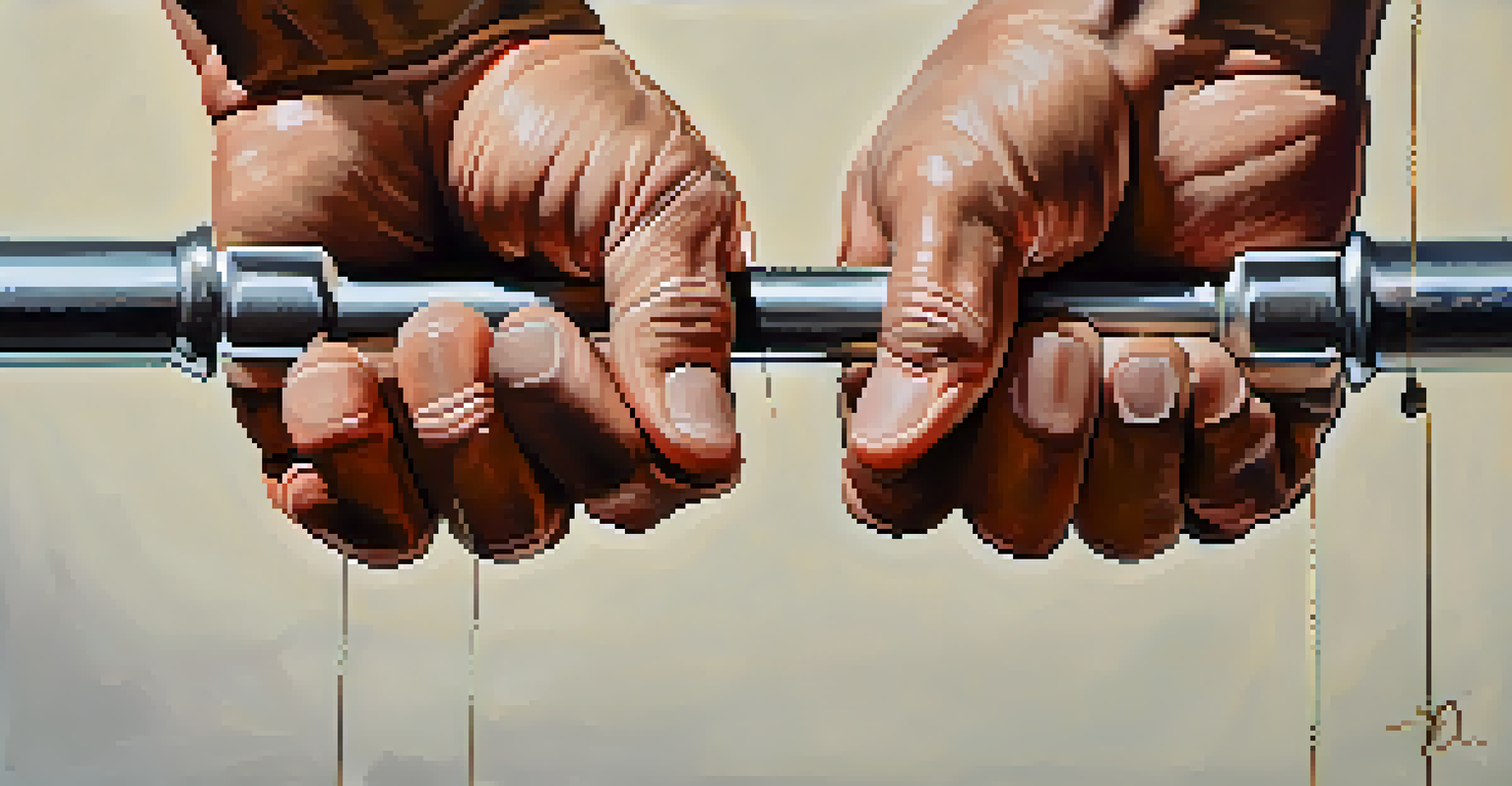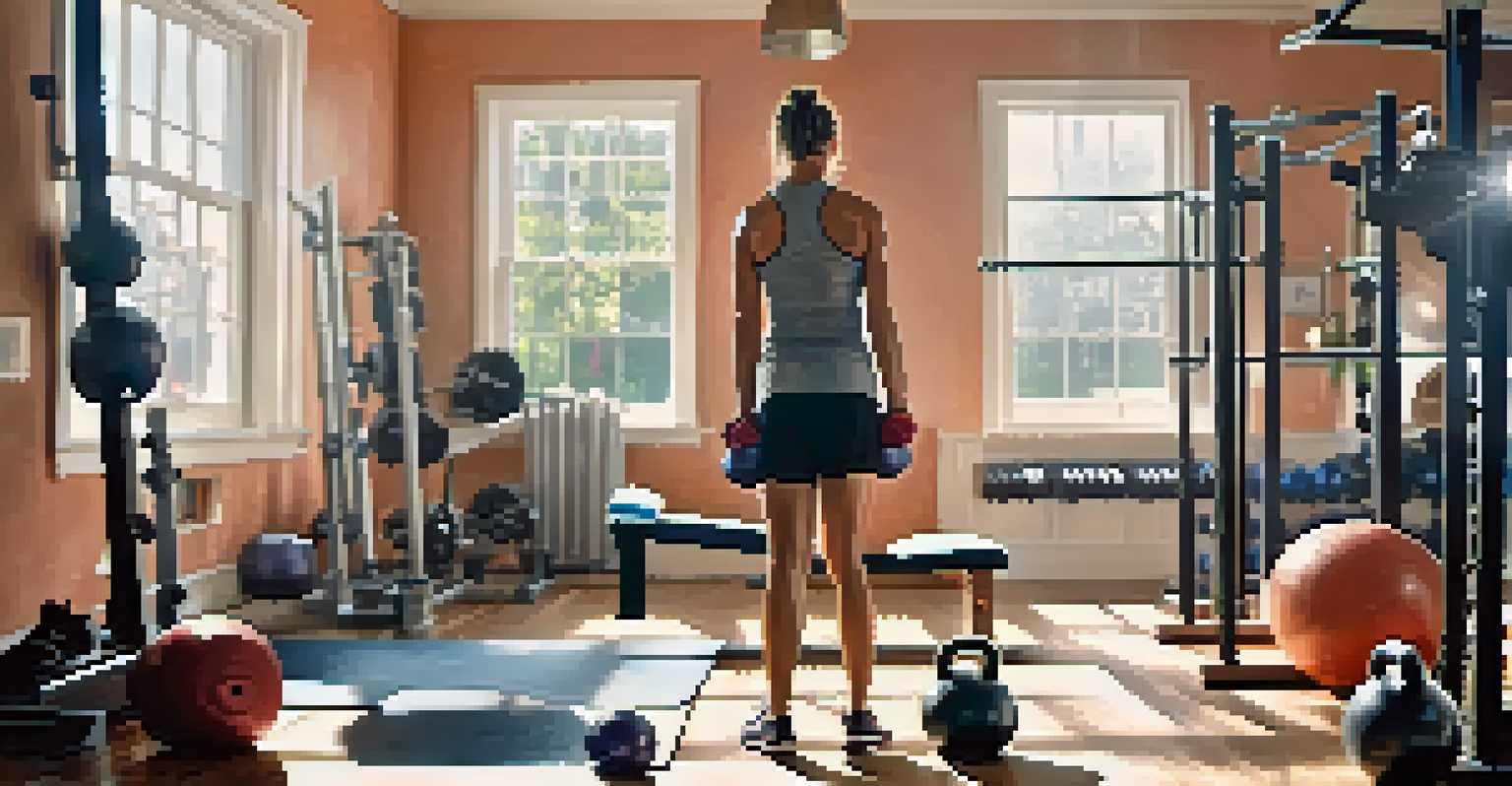Mastering the Art of Deadlifting: Advanced Techniques Explained

Understanding the Deadlift: A Core Exercise Explained
The deadlift is often hailed as the king of strength training exercises, engaging multiple muscle groups including the back, legs, and core. It mimics the natural movement of picking up heavy objects, making it functional and essential for overall strength. Understanding the biomechanics of the deadlift is crucial, as it helps you perform the lift safely and effectively.
The deadlift is a great exercise for building strength, but it’s also a great exercise for teaching the body how to lift safely and effectively.
At its core, the deadlift revolves around maintaining proper form to prevent injury while maximizing strength gains. This includes keeping your back straight, engaging your core, and driving through your heels. Visualizing the movement can help; think of it as a powerful hinge at the hips rather than a bend at the waist.
Incorporating deadlifts into your routine can lead to improvements in other lifts and athletic performance. As you progress, mastering the deadlift can boost your confidence and set a strong foundation for more advanced techniques. So, let’s dive deeper into those advanced strategies that can elevate your deadlifting game!
Perfecting Your Form: Key Techniques for Success
Form is everything when it comes to deadlifting. A common mistake is rounding the back, which can lead to serious injuries. To maintain proper posture, visualize your spine as a straight line from your head to your tailbone while keeping your chest up and shoulders back.

One effective way to ensure a strong setup is to adopt the 'screw your feet into the ground' technique. This means actively engaging your legs and creating tension through your feet, which helps stabilize your body. Pair this with a tight grip on the bar, and you’ll be ready to lift heavier with confidence.
Incorporate Accessory Exercises
Using accessory exercises like Romanian deadlifts and kettlebell swings can strengthen the muscles involved in deadlifting.
Remember, it’s not just about lifting heavy weights; it’s about lifting them safely and efficiently. Practicing with lighter weights can help engrain the proper mechanics. As you become more comfortable, gradually increase the load while maintaining that impeccable form.
The Importance of Grip: Variations to Try
Your grip can significantly impact your deadlifting performance. A standard grip may work for many, but exploring variations can open new avenues for strength gains. The mixed grip, where one hand is overhand and the other underhand, can help you lift heavier by preventing the bar from rolling.
Strength does not come from physical capacity. It comes from an indomitable will.
Another option is the hook grip, where you wrap your thumb around the bar and then your fingers over the thumb. This grip allows for a more secure hold, especially in heavier lifts, but may take some time to get used to. Experimenting with these grips can reveal what feels most comfortable and effective for you.
As you try different grips, pay attention to how they affect your lift. It’s not uncommon for lifters to switch grips based on their goals or the weight they’re attempting. Finding the right grip can enhance your performance and reduce the risk of injury.
Incorporating Accessory Exercises for Deadlift Strength
To truly master the deadlift, it’s essential to strengthen the muscles involved through accessory exercises. Movements like Romanian deadlifts and rack pulls can target the hamstrings and glutes, building the necessary strength for heavier lifts. These exercises focus on the same movement pattern while isolating specific muscle groups.
Another beneficial accessory is the kettlebell swing. This dynamic movement engages the posterior chain, helping to improve your hip hinge and explosive power. Integrating these exercises into your routine can enhance your deadlifting performance and overall athleticism.
Progressive Overload is Key
Gradually increasing the weight or intensity of your deadlifts through progressive overload is essential for continuous improvement.
Don’t forget about core strength! Planks and anti-rotation exercises can bolster your stability, allowing for a more controlled lift. By fostering a well-rounded strength program, you’re setting yourself up for success in your deadlifting journey.
Mental Strategies for Overcoming Deadlifting Challenges
Deadlifting isn’t just a physical challenge; it’s mental too. Many lifters face mental barriers when attempting heavier weights, often doubting their abilities. Developing a strong mindset can be the difference between a successful lift and a missed opportunity.
Visualization techniques can be powerful tools to overcome these mental hurdles. Picture yourself completing the lift effortlessly, feeling the strength surge through your body. This mental rehearsal can help build confidence and prepare you for the actual lift.
Additionally, setting achievable goals can keep you motivated and focused. Instead of fixating on a massive personal record, break your training into smaller milestones. Celebrate those victories, as they’ll propel you forward in your deadlifting journey.
Utilizing Progressive Overload for Continuous Improvement
Progressive overload is a fundamental principle in strength training, and it’s especially vital for deadlifting. This concept involves gradually increasing the weight, volume, or intensity of your workouts to push your body to adapt and grow stronger. By consistently challenging yourself, you’ll see improvements over time.
To implement progressive overload, keep track of your lifts in a training log. This will help you identify when to increase the weight or add more reps. It’s essential to listen to your body; if you’re feeling fatigued, it might be wise to maintain your current weight for a session or two before progressing.
Master Your Deadlift Form
Maintaining proper form is crucial for preventing injuries and maximizing strength gains during deadlifts.
Remember, progress isn’t always linear. Some days you’ll feel strong and ready to lift heavy, while others may be more challenging. Embracing this journey and adjusting your training accordingly will lead to long-term success in mastering the deadlift.
Recovery Techniques to Enhance Deadlifting Performance
Recovery plays a crucial role in any strength training program, especially for intensive lifts like the deadlift. After heavy sessions, your muscles need time to repair and grow stronger. Incorporating rest days and active recovery techniques can significantly improve your performance.
Consider using foam rolling or massage to alleviate muscle tightness and improve blood flow. These practices can enhance recovery and decrease soreness, allowing you to return to the gym feeling refreshed. Additionally, prioritizing sleep and nutrition is key to supporting your overall recovery process.

Finally, don’t underestimate the power of mobility work. Incorporating stretches and mobility exercises can improve your range of motion, making it easier to maintain proper form during your lifts. A well-recovered body is more prepared to tackle new challenges and push your deadlifting to the next level.